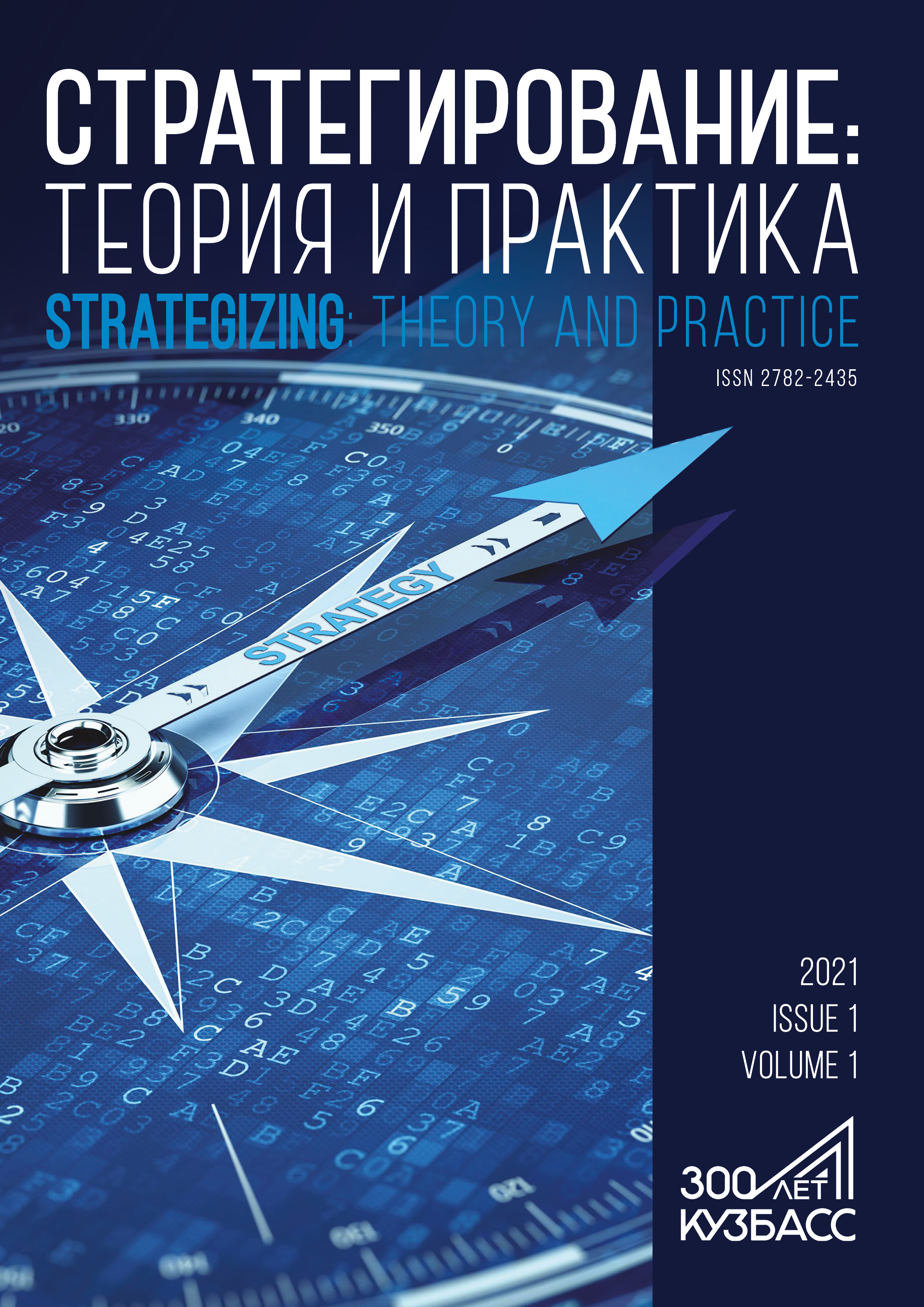Moscow, Moscow, Russian Federation
Innovation systems depend on information technologies. The intense international competition encourages states to interact as they allocate resources, search for new markets, expand their economic presence, etc. The authors analyzed the strategic opportunities for the development of the national innovation system in the process of implementing financial innovations. The research relied on the theoretical and methodological provisions of the School of Strategizing developed by Professor Vladimir Kvint, Doctor of Economic Sciences, Foreign Member of the Russian Academy of Sciences.
innovation strategy, national innovation system, financial innovation
1. Aganbegyan AG. Ekonomika Rossii na rasputye: vybor postkrizisnogo prostranstva [Russia's economy at a crossroads: Choosing a post-crisis space]. Moscow: Astrel: AST; Vladimir: VKT; 2010. 379 p. (In Russ.)
2. Ivanova N, Golichenko OG. Main factors of national innovation system development: Lessons for Russia. Voprosy Ekonomiki. 2012;(5):150-151. (In Russ.) https://doi.org/10.32609/0042-8736-2012-5-150-151
3. Khabekova MK. Innovation systems strategizing based on financial technologies. Ed. VL Kvint. St. Petersburg: NWIM RANEPA, 2022. 136 p. (The Strategist's library) (In Russ.)
4. Kvint VL. The concept of strategizing. Vol. 1. St. Petersburg: NWIM RANEPA; 2019. 132 p. (In Russ.)
5. Kvint VL. Development of Strategy: Scanning and Forecasting of External and Internal Environments. Administrative Consulting. 2015;(7):6-11. (In Russ.)
6. Mirziyoeva SSH. Accounting for global and national trends and idiosyncrasies of socioeconomic progress in the development of government strategies. Economic Revival of Russia. 2020; 1(63): 69-78. (In Russ.)
7. Mensfild E. Ekonomika nauchno-tekhnicheskogo progressa [Economics of scientific and technological progress]. Moscow: Progress; 1970. 238 p. (In Russ.)
8. Novikova IV. Strategizing of the human resources development: Main elements and stages. Strategizing: Theory and Practice. 2021;1(1):57-65. (In Russ.) https://doi.org/10.21603/2782-2435-2021-1-1-57-65
9. Okrepilov V. V. Ekonomika kachestva. Razvitiye ekonomiki Rossii: innovatsionnoye budushcheye: Nauchnaya sessiya professorsko-prepodavatelskogo sostava. nauchnykh sotrudnikov i aspirantov po itogam NIR 2010 goda [The development of the Russian economy: an innovative future: Scientific session of the faculty, researchers and graduate students following the results of research in 2010]; 2011; St. Petersburg. p. 47-49. (In Russ.)
10. Felps E. Massovoye protsvetaniye. Kak nizovyye innovatsii stali istochnikom rabochikh mest. novykh vozmozhnostey i izmenenii? [Mass prosperity. How grassroots innovation has become a source of jobs, opportunities and change]. Moscow: Izd-vo in-ta Gaidara; 2015. 468 p.
11. Crowley P, Trombley C. Synchronicity assessment using a non-parametric dynamic dissimilarity measure. Translational Recurrences. Springer Proceedings in Mathematics & Statistics / Marwan N [et al.] (eds). 2014;103. https://doi.org/10.1007/978-3-319-09531-8_12
12. Kvint VL, Bodrunov SD. Strategizing societal transformation: Knowledge, technology, and noonomy. Palm Bay, USA, Burlington, Canada, Abingdon, UK: Apple Academic Press; 2023. 206 p. (In Eng.)
13. Long JB, Plosser C. Real Business Cycles. Journal of Political Economy. 1983;91(1):39-69.
14. New Keynesian Economics. Vol. 2. Coordination Failures and Real Rigidities. Eds. Mankiw NG, Romer B. The MIT Press; 1991. 466 p.
15. Toffler A. Power shift: Knowledge, wealth, and violence at the edge of the 21st cent. New York etc.: Bantam books; 1990. 585 p.
16. Tufano P. Financial innovation. Handbook of the Economics of Finance. 2002; 1A:307-336.





